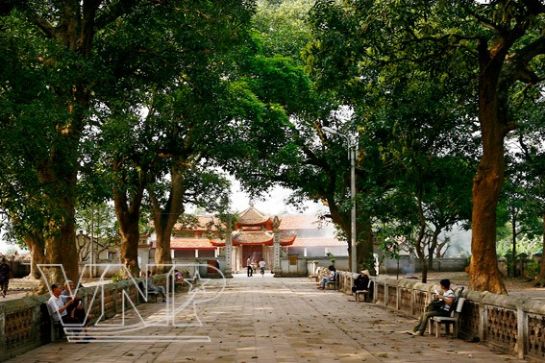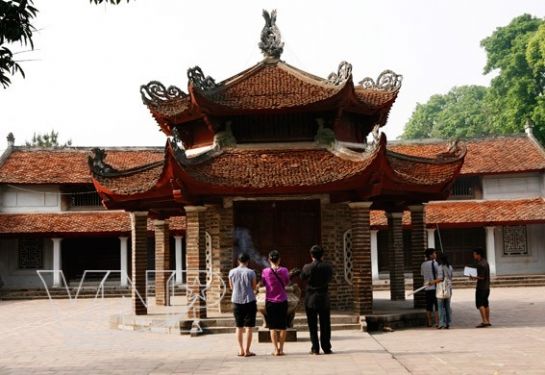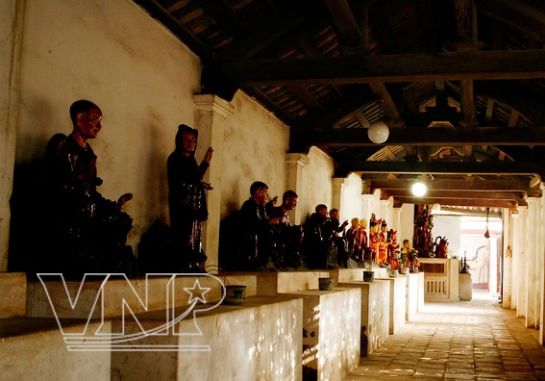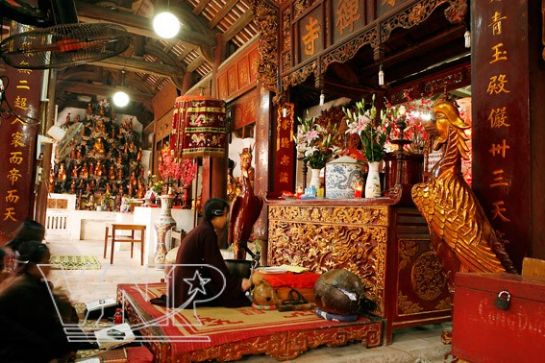|
Lang Pagoda, also called Chieu Thien Pagoda,
is located on the land of the old Lang Village (present-day Lang Thuong Ward, Dong Da
District, Hanoi), 6km west of the city centre. The
Pagoda was built in the 12th
century under King Ly Anh Tong’s Dynasty (1138-1175) to worship Buddha,
King Ly Than Tong (who reigned from 1128 to 1138) and Buddhist monk Tu Dao
Hanh – a famous monk during the Ly Dynasty. According to the legend,
Buddhist monk Tu Dao Hanh reached the peak of his holiness and
extraordinary magic. He died at Thay Pagoda and then was reincarnated as
the son of Sung Hien Hau (younger brother of King Ly Nhan Tong). King Ly
Nhan Tong didn’t have a son so he conferred the title of crown prince on
Sung Hien Hau’s son who later became King Ly Than Tong. When King Ly Than
Tong died, his son, Ly Anh Tong, ordered the construction of Chieu Thien
Pagoda in memory of his father.
Lang Pagoda is a
large harmonious symmetrical architectural complex with an airy space and
has 100 compartments. It was once considered the first pagoda in the west
of Thang
Long Imperial City.
The Pagoda
has a three-door gate, large brick-paved path, an octagonal house, the
main part of the pagoda, a bell house, a guest house, an
ancestor-worshiping house, a mother-worshiping house and a garden of tomb
towers. There are a couple of unique stone dragons on the two sides of the
stairs leading to the forecourt. The stone stele erected in 1656 was
carved with the image of two fairies with their wings spread.
|

The front court is shaded with old trees.
|
|

The octagonal house
in the front courtyard.
|
|

Statues of Arhats are placed along walls of the
Pagoda.
|
|

In the main chamber.
|
The Pagoda has
retained many precious objects of historical and artistic values, such as
the stele “Tao Le”, 1.4m high and 0.8m wide, erected in the 4th year of Thinh Duc (1656) with delicate
patterns, Phuc Dien stele and 13 others from King Tu Duc’s Dynasty to King
Bao Dai’s Dynasty. It has also preserved ancient tablets of the Le, Tay
Son and Nguyen dynasties, 30 panels, 31 couplets, a big bell and a great
bronze plaque cast in the year of Mau Ngo (1738), etc. Of particular
interest, in the inner harem exists the statue of Tu Dao Hanh that was
made from rattan and red-lacquered. According to a research, based on the
graphic strokes and layers of paint observed at the slits on the statute,
the statue dates back to the Le Dynasty. According to a researcher from
the Centre for Southeast Asian Prehistory Research, the two layers of
cloth used to make the statue are dated hundreds of years apart and the
bronze around the statue’s core is of the early Bronze Age. Inside the
statue there are seven ancient coins with the scripts recording the name
of the dynasty and an ancient bronze mirror. Prof. Doctor Do Van Ninh said
that these coins were cast in 1644-1646 which are also mentioned in
records in the stele on “the Management of Chieu Thien (Lang)
Pagoda”.
Every year, on
the 7th of lunar March (the
birthday of Monk Tu Dao Hanh), the Lang Pagoda’s Festival is held
jubilantly with traditional unique rites imbued with cultural features of
the old Thang Long Citadel.
Story: Tran Tri
Cong
Photos: Tat
Son |